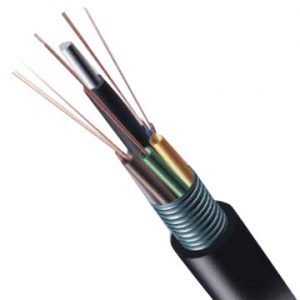Full steam ahead for broadband speeds
January 18th, 2023

The rollout of full-fibre broadband continues to accelerate. The availability of fibre to the home (FTTH) in the UK has surged from under 2% of premises in 2016 to 43% last year. With the current growth rate, it seems likely that 2023 will see that number go far past 50%.
Full-fibre provision will continue be a priority for broadband providers for some years yet. Many households are continuing to require the most they can get out of their broadband connections with multiple devices for work, streaming, gaming and video calling.
While most providers don’t currently offer full-fibre connections beyond 1 Gbps, technology companies are already anticipating future speed demands. Telefonica has recently successfully trialled 25G PON technology using Nokia equipment. With this technology offering a theoretical symmetrical speed of 25 Gbps, consumers can look forward to even more capable speeds in the years to come. Nokia are not resting on their laurels however, and are now even trialling technologies which will allow for a 100 Gbps connection.
Not to be outdone, mobile providers are surging ahead with their rollout of faster networks. Some 70% of UK households now have access to a 5G service from at least one network, providing healthy competition to traditional fixed-line broadband providers as to who can get a reliable, fast internet connection into homes first.
PTT has a number of courses that cover full-fibre broadband access such as “Optical access networks” and “Next generation access networks“. Two new PTT courses covering 5G technology and services will be available soon.
Comments Off on Full steam ahead for broadband speeds
Thirty years of progress
January 5th, 2023

2023 marks the 30th anniversary of PTT’s formation and the start of its provision of e-learning for the telecommunications sector.
Back in 1993 commercial access to the Internet was in its infancy, Nokia had just launched its first hand portable GSM phone, fax machines were in every office, and PTT launched its first e-learning course on floppy disks (remember those?).
Thirty years later, fibre to the premises and fifth generation mobile services provide ever faster access to the online services we all depend on. And PTT provides an ever-expanding catalogue of online courses covering technical aspects of modern telecommunications.
The deregulation of the telecoms sector that began in the 1980s saw more companies joining the sector with cable TV providers in the UK allowed to also provide telephony services in 1991. In the 2020s, competition is very high with new entrants contributing to the dramatic expansion of the availability of fibre broadband services.
So, what does the future hold? The retirement of second and third generation of mobile services with the expansion of availability of 5G is likely to continue in 2023. 5G has been designed to support innovative new cloud-based services including those involving the Internet of Things, private 5G networks, and mobile edge computing. Perhaps the most important task for telecoms operators in the years to come will be advising their business customers on the benefits these new ways of working can provide.
PTT’s mission throughout the last thirty years has been to ensure those working in the telecoms and ICT sectors are kept informed of the new technologies that have transformed the sector.
We continue this in 2023 with the release of two new online courses providing a comprehensive and detailed treatment of LTE and 5G mobile networks.
Comments Off on Thirty years of progress
30 years of texting
December 16th, 2022

This month marks the 30th anniversary of the first SMS (Short Messaging Service) message when Vodafone engineer Neil Papworth sent the words “Merry Christmas” from a computer to a mobile device.
Originally only intended as a means of internal communication for mobile service providers, the advent of affordable mobile phones meant that within a matter of years text messaging became hugely popular with the general public, peaking 10 years ago when some 150 billon SMS messages were sent in the UK alone.
While still widely used, SMS messaging has slowly been decreasing over the years as more advanced communications services are rolled out. WhatsApp, iMessage, Facebook Messenger and many other services allow for end-to-end encrypted messaging including the ability to share images, video and of course, emojis.
SMS will still likely be around for a number of years yet, with some 5.4 billion people on the planet owning a mobile device that can send and receive these messages without the need for a third party service. However, the glory days of texting are probably over and SMS is seen as being increasingly obsolete.
PTT has a range of courses covering mobile communications including “Wireless communications“, “Introduction to mobile systems” and “Mobile radio communications“.
In 2023 we will be releasing new courses “4G and 5G radio access networks” and “Advanced mobile systems” which cover the technologies that drive the latest mobile networks.
Comments Off on 30 years of texting


